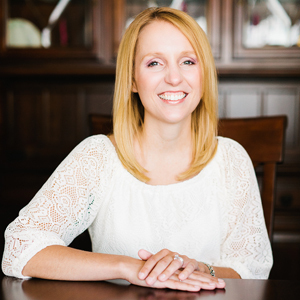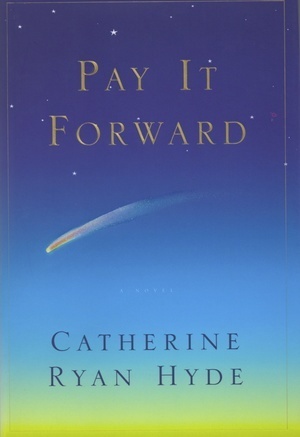Cathy Lamb's Blog, page 55
April 30, 2015
Author To Author Interview: Kristy Woodson Harvey
Cathy Lamb: Pretend you’re in North Carolina, in summer, in front of a tough, blunt, poor young woman who has made a choice most of us would find impossible.
Now, read this paragraph, then I’ll chat with you about Kristy Woodson Harvey, the author behind this intriguing debut novel titled, Dear Carolina.
 Parsnips and salsify is the only vegetables that you ought to just leave alone. They’re tough as nails, and it don’t matter how cold it is. My daddy, he used to call me his little parsnip. But I’d bet dollars to doughnuts he didn’t get the comparison. A momma who didn’t want me, always scraping by. I could survive damn near anything. But, coming up, I didn’t know we were poor. All them rich kids got packed up and sent off to private school. In a room chock full a’ free lunch cards, that dollar I took may as well have been a gold metal…
Parsnips and salsify is the only vegetables that you ought to just leave alone. They’re tough as nails, and it don’t matter how cold it is. My daddy, he used to call me his little parsnip. But I’d bet dollars to doughnuts he didn’t get the comparison. A momma who didn’t want me, always scraping by. I could survive damn near anything. But, coming up, I didn’t know we were poor. All them rich kids got packed up and sent off to private school. In a room chock full a’ free lunch cards, that dollar I took may as well have been a gold metal…
Now that is great writing. Voice, originality, pain, desperation, and strength, all in one.
Kristy, thanks for joining me today. If I told you that I would give you a mongo – sized box of chocolates if you could sum up Dear Carolina in just one sentence, what would you say?
Kristy Woodson Harvey: Dear Carolina is a book about the ways in which we create our families. (I will do ANYTHING for chocolate. Seriously.)
Cathy Lamb: Ah, a writer after my own chocolate heart. I so understand you.
I found the premise of Dear Carolina – two mothers, the birth and adoptive mother – writing letters to their baby, Carolina, fascinating and original. What was the spark that led to this idea?
When my son was first born, I remember having this moment where I was just staring at him, and we felt so connected that I couldn’t imagine giving up my child, and I wondered what would have to happen in your life for you to be able to do that. And, on the flip side, what it would be like to adopt a baby knowing that he or she would always have this deep, biological connection to another woman. And what I really, really wondered is how it would be to tackle all of these issues within a very open family adoption.
Jodi and Khaki were just in my head that night. I remember lying in bed and hearing Jodi’s voice and playing out conversations in my head. And that was it! I knew I had to write this story.
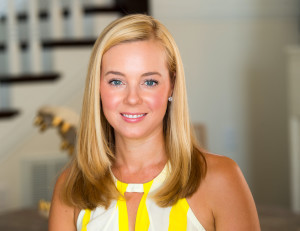 It’s amazing, the ideas that come to us in the middle of the night, isn’t it? My characters can trigger my insomnia and keep me up for hours.
It’s amazing, the ideas that come to us in the middle of the night, isn’t it? My characters can trigger my insomnia and keep me up for hours.
You’re an interior designer and live in North Carolina as is your character, Khaki. Is Khaki you? How are you the same, how are you different?
I wouldn’t say Khaki is me. But we do have similarities. I have endometriosis and did all the Chinese medicine stuff, so a good bit of that is real. Although, against all odds and what I had been told forever, I got pregnant with no trouble at all! I have my feisty moments, like Khaki, but I think she’s a little more controlling than I am. (I hope!) And she’s braver, for sure. But a lot of her juggling and decision making throughout the book was similar to things that I was going through.
And she has some real wounds that have shaped her and a very tough momma who also made her who she is. I have the sweetest, best mom in the world and no real tragedies, which I am very, very thankful for!
One thing I so enjoyed in the book was how completely, utterly different the two voices of Khaki and Jodi were. That is much harder to pull off than it looks, as you know. Please include one favorite line/paragraph from each of them that you feel best sums up their personalities.
I don’t know if these sum up their personalities, but I love when Jodi says, “The only thing that can really be changed is a dollar bill.” She’s quick and so cute, and she has so much wisdom for a nineteen-year-old. But, even though she’s been through so much, there’s such a vulnerability about her, too. It’s like she understands the harshness of life but she hasn’t let it make her jaded.
For Khaki, “You can never have too many people who love you,” sums it up, for sure. She has some wounds herself, and the way she heals them is by surrounding herself with love. I think she makes some very, very difficult decisions in this book that aren’t necessarily best for her out of her big heart. She can be kind of annoying and over-bearing at times. But she does it with such good intentions.
 You have covered many issues in this book. Alcoholism, widowhood, single motherhood, abuse, a restraining order, adoption, the consideration of an abortion, marriage, infertility. Why were all of these topics important for you to address?
You have covered many issues in this book. Alcoholism, widowhood, single motherhood, abuse, a restraining order, adoption, the consideration of an abortion, marriage, infertility. Why were all of these topics important for you to address?
This may sound silly but, to be honest, I didn’t really set out to address any issues. I just had the idea for the book and this is how it unfolded. I think all of these things are issues that real women are grappling with day in and day out. But this book was one hundred percent driven by the characters, not the issues.
What part did your Christian faith play in writing this novel and in the characters and their character arcs?
My faith is very important to me, but I didn’t really set out to include that in the book. (In fact, my work in progress really has none of that.) This was a very Southern story, and I think Christianity is something sort of ingrained and intrinsic to this culture and, in particular, these characters. It almost felt like I couldn’t tell the story without a little faith woven in because they would have been raised with that as such a critical part of their lives.
This is your first book. (Whooee!) What did you learn during this process? What advice would you give new writers? Are you working on another book?
Getting your first book deal is a bit like jumping into the deep end before your first swimming lesson. It has been fun and amazing and trying at times. But so, so gratifying. A dream come true! I learned patience at a level I have never known, for sure. So my advice to new writers is to submit when you can, know you’re going to wait a long time, and keep writing. It makes the waiting so much easier. And then, if you get a big stack of rejections back, you have a brand new book to submit.
My next book, LIES AND OTHER ACTS OF LOVE, is coming out April 2016. I’m about halfway through my third book, but I haven’t been working on it much with the launch of DEAR CAROLINA. I can’t wait to dive back in.
Can you describe for us your writing process? Do you write a first draft and then edit multiple times, or do you edit as you go? Do you ever feel like banging your head against the wall when you’re writing?
I always start the book with a scene that won’t let me go. For DEAR CAROLINA, it was the scene where Jodi is on the beach, deciding whether to give up Carolina, the cover scene, actually. I write those really critical scenes that are in my head and then weave the story around those. I try to write a first draft fairly quickly and then I edit and edit and edit, put it away for a couple of months, come back and edit again. I value my writing time so incredibly much because, as a stay-at-home mom, I don’t get it as regularly as I would like. So, usually, I’m ready to jump in.
Some days, I muddle through those 2,000 words and think they are terrible. But, funnily enough, I tend to come back to those passages where it felt like pulling teeth later and think they are great. Weird, right?
Well, there’s a lot that is “weird” about writing, that’s for sure. I can go on and on about that very topic, but I won’t.
We’ve jumped ahead a little bit, but it’s not too late. Tell us about you, especially your adorable three year old. What is a normal day like for you, when do you write, when do you work, what do you like to do, etc.
I think a “normal” day might be a bit of a stretch! Hahaha! He’s in preschool four mornings a week so, ideally, I drop him off at school, write my 2,000 words while he’s there, and hopefully get some emails answered. After he goes to bed, I do my design blog, author blog, freelance work etc. I help my husband a bit at his dental office so sometimes my little guy gets to come do that with me. It’s not always pretty, but it usually tends to work out.
We spend pretty much every weekend at the beach, and I always try to get some writing time in while Daddy is on duty. I love hanging out with those boys and always try to get my girls’ nights in too. I got my yoga certification a few years ago, so I try to fit a bit of that in there, too. This has been a very, very fun and happy time in my life, and I know I will always look back on these years as some of the best.
I just have to ask this, as I’m curious and am not good at decorating: As an interior designer, can you give us five To Do Tips For Decorating and Five Don’t Do Tips For Decorating?
I don’t believe that one bit. You couldn’t have written Grenady without being a good decorator! But, all the same, here’s my two cents:
To do:
1. Buy things you love.
2. Pick out rooms you like in magazines, on Pinterest, etc. to help give you a clear vision of what you want.
3. When in doubt, start with art. One focal point can totally make a room.
4. Buy the best furniture you can afford and keep it for years.
5. If you aren’t sure of your “look,” buy your major pieces in neutral fabrics and change up the pillows and accessories with your mood.
Don’t:
1. Buy furniture without measuring first. Scale is so important and the wrong scale can ruin the look of a room.
2. Decorate with trends. Nothing is timeless, so you’ll probably have to refresh your look every few years, but you don’t want to buy furniture that you like for a season only to have to turn around and do it all over again.
3. Be in such a rush to get it all done that you sacrifice what you really want for convenience.
4. Buy anything that you don’t love. Period. If you don’t love it, it doesn’t have a place in your home.
5. Forget to let your personality shine through. Your home should be a reflection of your family.
Visit with Kristy on her website http://www.kristywoodsonharvey.com/
Facebook https://www.facebook.com/profile.php?...
To buy Dear Carolina…
BARNES AND NOBLE | INDIEBOUND | BOOKS A MILLION | AMAZON | POWELLS | TARGET | iTUNES | GOOGLE PLAY | KOBO
April 22, 2015
A Heart Brownie – Calorie Releaser
You do know that if you cut a heart in the center of a pan of brownies, the heart lovingly releases all the calories into the air, right?
This is why I was able to eat four brownies, extra chocolate chips. This trick is how I keep my girlish figure. (That is a JOKE for those of you who have not met me, by the way. We’ll just politely say that I CURVE.)
April 20, 2015
For Writers: Old Homes With Secrets, Car Living, and Scottish Men in Kilts. How To Create Compelling Settings In Your Books.
I don’t like boring words.
I like scintillating words. Words that are skippy and delicious, or long with multiple syllables that roll like literary candy out of your mouth. Words that make you think, words that sound like what they are, words that dance and tease and have hidden meanings.
I do not like this word: Setting.
Setting.
So boring. Lifeless. No romance to it. No high jinks. No dynamite.
And yet.
 As a writer, the setting is so important in a book. The setting can increase the tension and the conflict, transport the reader to paradise or to terror, and ratchet up the odds, the mystery, the romance or the thrill ride.
As a writer, the setting is so important in a book. The setting can increase the tension and the conflict, transport the reader to paradise or to terror, and ratchet up the odds, the mystery, the romance or the thrill ride.
Here are a few thoughts on setting, from my fried writer brain to yours. I apologize for using my books as examples all the way through, but hey. I know my books best and I know why I used that setting as I did, so hopefully it will be helpful.
1. Use setting to heighten a difficult personal struggle and make life even more challenging for your character.
In my latest book, What I Remember Most, the primary setting is a small, western style town in central Oregon surrounded by snow capped mountains. You can almost taste the snowflakes on your tongue and see sexy cowboys galloping by on horses.
But within that setting, my protagonist, Grenadine Scotch Wild, is living in her car. Yes, her car. On the run, away from a husband who has been arrested for embezzlement, fraud, and money laundering and will not tell the officials she’s innocent unless she returns to him. Grenadine’s accounts have been frozen by the government, she’s dead broke, therefore, car living.
 Do you have a vision of car living? If not, go and park in your car in a parking lot and sit there for three hours. Stuffy. Hot. Uncomfortable. How do you sleep? Dangerous. Where do you pee? Yes, that. What a problem.
Do you have a vision of car living? If not, go and park in your car in a parking lot and sit there for three hours. Stuffy. Hot. Uncomfortable. How do you sleep? Dangerous. Where do you pee? Yes, that. What a problem.
The setting worked because no one wants to live in a car and the readers were rooting for Grenadine to get out of it. She was a sympathetic character, a woman who had lost everything, a woman who was fighting to get out of car living, a woman who was working hard, had no help, and was one her own. And oh, a jail sentence hanging over her head.
Use setting to toss your character into chaos.
2. Make your reader shudder. Your setting can be used for tension, horror, angst, crimes. Take them to a place they DON’T want to go. Ever. Make them uncomfortable. Make them catch their breath.
I put Grenadine in jail for the weekend. I went to jail for three hours on a tour so I could get it right. Think: Suffocating. Bars. Scary people. Violence. Group showers. Horrible food and who looks good in a blue jumpsuit?
In The First Day Of The Rest Of My Life, I created a small, dusty, cramped house in the middle of nowhere for a crime to take place. The setting scared me, and I wrote it.
I had an insane asylum in Such A Pretty Face, briefly, where the mother was committed.
Settings can illuminate the plight of your characters, their internal hell and their external challenges. 3. Make your reader gleeful. Let your reader live vicariously through your characters in their setting.
3. Make your reader gleeful. Let your reader live vicariously through your characters in their setting.
Later, after working as a bartender and as an assistant to a furniture maker, two exhausting jobs, Grenadine finally got enough money together to rent a place.
So what setting did I put her in next? A cozy remodeled apartment above a red barn in the country.
I described the two decks overlooking the farmland, the magnificent sunset and sunrise views, the animals she sees, the peace and tranquility.
Why this setting? I would love to live atop a barn, horses below, in the country. Many of my readers would, too.
In the book I just finished, My Very Best Friend, which almost made me want to go and live in a cabin, alone, in Montana, and mutter to myself, but that is another story, I set it in Scotland. Imagine: Hot Scotsmen in kilts. Bagpipes. Green rolling hills. Charming villages. Who wouldn’t want to go to Scotland?
Imagine: Hot Scotsmen in kilts. Bagpipes. Green rolling hills. Charming villages. Who wouldn’t want to go to Scotland?
I’ve also set stories on quaint islands, Oregon beach towns, a town along a river, a schoolhouse transformed into a home, Cape Cod, a lavender farm, a tree house, and a Queen Anne house.
Take your reader on a trip with you. They want to go. Their bags are packed and ready.
4. Tap your readers’ inner most imaginations.
In Julia’s Chocolates, Lara is a closet painter. I gave her an attic, then described all the wild, free wheeling paintings in there.
In Such A Pretty Face, Stevie had a garage where she built and painted chairs – huge chairs, with feet and wings and stripes and polka dots.
Grenadine is a collage artist and painter. I gave her a studio in the top floor of her little green house. I described the colorful tables and chairs, the jars full of paints, sequins, fabrics, brushes, lace, etc. The books on art, the plants, the windows. Being an artist appeals to readers, to their dreams.
Build settings that encourage your readers to think, to be inspired, to dream. What if…what if I started painting again? Building again? Writing? Making a collage?
5. Relate to your readers’ real lives with your setting.
In A Different Kind Of Normal I created a home that belonged to my character’s ancestors. There washistory in that house. Jaden was walking up the same stairs as her ancestors, looking out the same windows, crying at her kitchen table, which her ancestors had probably cried at, too.  Your readers have homes they love and miss, homes that have prickly memories. They have grandparents, crazy aunts, beloved dead fathers, too. They have Godzilla–type ex spouses and distracted boyfriends. They have funny pets. They have jobs and bosses they hate in the corporate world. They go to family reunions at the lake and take tranquilizers while they’re there.
Your readers have homes they love and miss, homes that have prickly memories. They have grandparents, crazy aunts, beloved dead fathers, too. They have Godzilla–type ex spouses and distracted boyfriends. They have funny pets. They have jobs and bosses they hate in the corporate world. They go to family reunions at the lake and take tranquilizers while they’re there.
They have failing businesses and cliques they have to deal with in the suburbs.
Link your readers’ personal lives to the setting in your story, which will make your book more relatable, and personal, to them.
6. Know your readers. What do many of them like? Use it.
I think my women readers like lingerie. It’s frilly. Pretty. It inspires passion. So in If You Could See What I See, Meggie had a lingerie company, filled with silk and lace.
In The Last Time I Was Me, Jeanne Stewart gutted and remodeled a dilapidated house. I think my readers like reading about remodeling and décor, new kitchens and paint colors. They have homes, too.
In Henry’s Sisters, the sisters were running a bakery. Giant cupcakes, wedding cakes, delicious treats. Yes, I think my readers like bakeries and sweets.
Appeal to your reader via your setting.
 7. Make your setting something that readers can laugh about.
7. Make your setting something that readers can laugh about.
In Julia’s Chocolates, Julia is out on her Aunt Lydia’s farm. Aunt Lydia has tons of chickens. Chickens in brightly painted chicken coops, chickens who chase each other, chickens who have quirky personalities. And the roosters, those dandy fellows!
Aunt Lydia also has a rainbow bridge in her front yard, toilets overflowing with flowers, and four foot tall ceramic pigs who each have a nametag. The pigs are named after men Aunt Lydia doesn’t like.
Her front door is painted black to “ward off seedy men.”
Funny, right? Good. Readers like to laugh.
To sum up this huge essay, which I did not intend to be quite so long, write your settings to evoke memories, emotions, thoughts, tears, laughter, etc. from your readers. You want them to feel. You want them to think. You want them to block everything else out of their life and dive head first into your story.
Use the setting in your books to help them do so.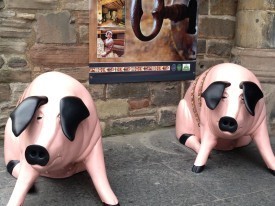 There is so much more to say about setting, how to use weather, charging rivers, frothing oceans, seasons, evocative or dangerous landscapes, bleak neighborhoods and destitute countries, etc. but that is enough for today. I have to start writing my new book now, if I can get my brain to work.
There is so much more to say about setting, how to use weather, charging rivers, frothing oceans, seasons, evocative or dangerous landscapes, bleak neighborhoods and destitute countries, etc. but that is enough for today. I have to start writing my new book now, if I can get my brain to work.
I do know the setting, though. It’s a tugboat on a river, complete with ducks who lay eggs in pots on the deck, a blue heron, geese, sailboats, and odd ball neighbors. Including a secretive man who lives two houseboats down…
*** originally published in Velvet Morning Press http://velvetmorningpress.blogspot.com/
April 10, 2015
A Little Heart…
April 1, 2015
Author To Author Interview: Andrea Lochen
Today I’m interviewing author Andrea Lochen, a new mother and a great writer with a truly stunning imagination.
So, Andrea, before we dive into that imagination of yours, I’m as curious as everyone else is about authors and their lives. Tell us about yourself.
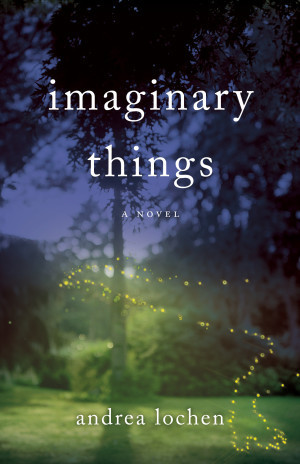 Andrea Lochen: I’m the author of two novels, Imaginary Things and The Repeat Year, both of which are a unique blend of women’s fiction and magical realism. I like to write about ordinary people living in otherwise ordinary settings who encounter extraordinary opportunities (Such as seeing your child’s imaginary friends or reliving a year of your life, respectively.)
Andrea Lochen: I’m the author of two novels, Imaginary Things and The Repeat Year, both of which are a unique blend of women’s fiction and magical realism. I like to write about ordinary people living in otherwise ordinary settings who encounter extraordinary opportunities (Such as seeing your child’s imaginary friends or reliving a year of your life, respectively.)
Nine months out of the year, I’m also an English lecturer at the University of Wisconsin-Waukesha where I teach writing to undergraduate students. I live in Madison, Wisconsin with my husband, my two-month old daughter, and my Teddy Bear dog (an adorably fluffy Bichon Shih Tzu mix).
In my free time, I’m an avid reader and baker (cupcakes with butter cream frosting are my specialty!)
Cathy Lamb: Lovely. Now I have something to look forward to when I see the postman. I love butter cream icing!
But on another note that is not about scrumptious cupcakes, in your book, Imaginary Things, Anna Jennings can see her son’s imagination. I absolutely love that.
What was the spark?
I was a very imaginative child, and though I never had an imaginary friend, my older sister and I loved to play these very involved games of make believe. Some of our favorites were orphanage, the Box Car children (Yes, we were very into orphans, apparently!) school, and gift shop.
I remember sometimes getting so involved in these elaborate scenarios that our little fantasy worlds would actually feel real to us, so imagination has always been something that preoccupies and fascinates me. When starting a new writing project, I tend to use a “what if?” question as my jumping off point.
For Imaginary Things, that question was: what if a parent had the ability to see their child’s inner life of pretend play? And voila! Anna and David were born.
I loved the first paragraph of your book because it sounded true. “There was something about driving an ancient Dodge Caravan packed with all of my worldly possessions, including my four year old son and my cat, that reeked of failure and desperation.”
Have you ever been in a situation like this yourself?
Thankfully I’ve never been in a situation quite as dire as Anna’s (one that financially requires her to move herself and her son in with her grandparents), but I certainly have had more than my share of do-it-yourself moves, cross-country (from Mississippi to Michigan, for example) and otherwise.
Packing up all of your belongings into a car and hauling them across state lines really makes your life seem small and portable in a way that I find disconcerting. It also requires you to sort through your personal possessions, as well as the memories attached to them, and decide what to keep and what to cast off.
And it’s always a little unnerving starting over in a new place, which is the off-kilter feeling I wanted Anna to have at the beginning of the book.
What part of yourself, or your life, is in the character of Anna Jennings? Authors often share, in one way or another, what they think, how they feel, and their past, etc. through their characters. Did you do that here?
Anna and I are actually more different than similar. I put a lot more of myself into the protagonist from my first novel, Olive Watson (who is more reasonable and tends to play it safe), so when I started Imaginary Things, I knew I wanted to break away from that and write someone who was a little more reckless and impulsive.
That was one of the reasons I chose to write this book using a first-person point of view rather than third-person; it was easier for me to get into Anna’s perspective if I was also in her distinctive voice.
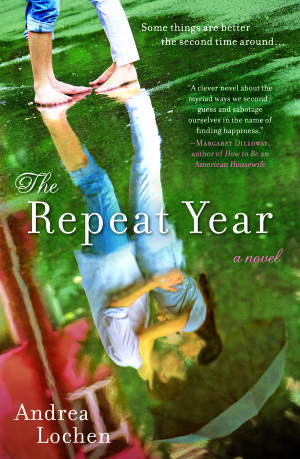 What’s interesting to a lot of readers is that I wrote this novel about a mother and child relationship a few years before I actually became a mother. But the tender scenes between Anna and David were some of my favorite to imagine and write.
What’s interesting to a lot of readers is that I wrote this novel about a mother and child relationship a few years before I actually became a mother. But the tender scenes between Anna and David were some of my favorite to imagine and write.
And though I don’t have the magical ability to see my daughter’s imagination (although, who knows? She’s currently much too young for that kind of play!), I feel like Anna and I both share an incredibly fierce love for our children.
Aw, we mothers. I totally understand both you and Anna. The love we have for our kids is endless, isn’t it?
But mother to mother and author to author, what was the hardest part about writing this book?
Figuring out why Anna could see David’s imagination and what it all meant. So as she is struggling to figure out the rules of this bizarre phenomenon and what it all adds up to in the novel’s action, I, as the author, was as well! My writing process tends to be a kind of puzzle-solving that requires me to work backwards.
Oh, that is so interesting. I have a general idea of where I’m going in the story, but things shift and change while I write. I often take out characters in my fourth or fifth edit. I think of writing as a puzzle, too, only sometimes the puzzle is head bangingly difficult and it seems like I can’t find the right pieces.
How long did it take you to write Imaginary Things? How many times did you edit it?
Imaginary Things began as a short story I started writing back in 2006 which eventually morphed into a novel. So if you count that as my starting point, eight years? (Gulp!) Of course, I wasn’t actively working on it that entire time since I was focusing most of my attention on my first novel, The Repeat Year. But once The Repeat Year was published in 2013, I returned my attention to David and his dinosaurs.
I’m a really fast drafter and a terribly slow (and kind of whiny!) reviser. I think it took me about eight drafts and some very helpful feedback from my trusted readers to finally get it right.
What challenges do you face as a writer? What do you love about it?
Finding time, of course, but I know that’s also kind of an excuse! As I mentioned above, I absolutely love the creative process of drafting—inventing new characters, concocting dialogue, weaving plot, describing settings, and the joyful sense of discovery. Revision is much more challenging for me, because it feels more like work than play, but I’m gradually getting better at it.
How long have you been teaching at UW – Waukesha? What are three most important pieces of writing advice you have for your students?
I’ve been teaching at UW-Waukesha for the past six and a half years, and I love it! It’s really invigorating working with young writers and it helps remind me of the passion, enthusiasm, and sense of unlimited possibility that all authors should strive to keep alive in their writing.
I advise my students to 1) Never start a story with a character’s alarm clock going off and starting their day, but rather start as close to the action as possible. 2) Learn “the rules” of writing in order to be able to consciously break the rules, and 3) Persevere, persevere, persevere!
I always tell them that the only difference between the amateur writers and the professionals is not talent, but hard work, belief in oneself, and the ability to revise.
What is your goal as a novelist?
To, in some small way, improve the lives of my readers, whether that is through recognition of themselves and their struggles in my characters or just pure entertainment and enjoyment!
If you had a whole day to yourself, what would you do?
As a new mom with a two-month-old daughter, I immediately knew my answer to this question! SLEEP! In a darkened room with a fluffy down comforter and gentle white noise in the background and no alarms or cries to wake me. Just deep, uninterrupted sleep for as long as my body desires! Then once I woke up (if I had any time left!), I would maybe get a massage or pedicure and do some long overdue clothes shopping with a friend.
Thanks for your time, Andrea, and for letting us peek into that imagination of yours.
Andrea’s website: http://andrealochen.com/
Facebook page: https://www.facebook.com/andrealochen...
Amazon link to purchase IMAGINARY THINGS: http://www.amazon.com/Imaginary-Thing...
March 27, 2015
Putting Glasses On My Cat
My poor cat. You know you have WAY too much time on your hands when you spend ten minutes putting your glasses on your cat’s face – just so – and then taking a picture.
That’s Innocent Husband in the background. We are getting old and are easily entertained.
March 22, 2015
Author To Author Interview: Adria J. Cimino
Bonjour, Adria!
I want to chat with you about your novels and publishing business, but I can’t resist asking about your life in Paris, France first. You were born here in America, and yet now you’re in the City of Lights. I think I want to be you! Tell us about that journey.
 Hi Cathy, Thanks for inviting me to your blog! Like so many American students, I took French in school and dreamed of one day living in Paris. As it turned out, I enjoyed the language so much that I continued it through college, and through this interest, ended up meeting a lot of French expats in my hometown of Sarasota, Fl.
Hi Cathy, Thanks for inviting me to your blog! Like so many American students, I took French in school and dreamed of one day living in Paris. As it turned out, I enjoyed the language so much that I continued it through college, and through this interest, ended up meeting a lot of French expats in my hometown of Sarasota, Fl.
One of these friends helped me plan a trip to France to improve my French, and introduced me to a young man who could show me around Paris. He used to be her neighbor when she lived in France, and he was a college student, too. As they say, the rest is history! We got married couple of years later, spent a few years in the U.S. and then returned to Paris—where I’d always wanted to live!
I love it. You are living a love story. We should make a movie about your life. You write the script.
Speaking of writing, you have three books Close To Destiny, Paris Rue Des Martyrs, and That’s Paris. Can you give us a couple of sentences about each book?
Close to Destiny is a magical realism novel about righting the wrongs of the past. A young woman facing inner demons is plagued by strange encounters at a London hotel. The experiences make her question her own notion of reality—and the power she holds over her own destiny.
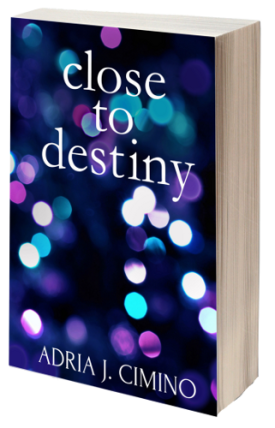 Paris, Rue des Martyrs, contemporary fiction, is about encounters that make a difference. Four strangers in Paris are at a moment of crisis in their lives. And at that moment, their stories entwine as their paths cross on this typically Parisian street—the Rue des Martyrs.
Paris, Rue des Martyrs, contemporary fiction, is about encounters that make a difference. Four strangers in Paris are at a moment of crisis in their lives. And at that moment, their stories entwine as their paths cross on this typically Parisian street—the Rue des Martyrs.
That’s Paris is a multi-author short story anthology, with a foreword by best-selling author Stephen Clarke (A Year in the Merde). From culinary treats (and catastrophes) to swoon-worthy romantic encounters (and heartbreaking mishaps), this anthology takes the reader on a journey through Paris—and what it’s really like to live here!
Did you always plan on becoming a writer? What other jobs and experiences have you had?
I always loved to read, and as a teenager started writing a bit, but the idea of creating an entire novel scared me. By the time I was in my early 20s though, the need to write was too great, overpowering any intimidation. And so I set to work. In the meantime, I became a journalist, writing for The Associated Press, a business journal in Boston, and finally for Bloomberg News in Paris.
That all sounds very exciting, especially from the perspective of my life here in suburbia, where the most exciting thing is listening to the coyotes howling.
What do you like about writing? How many hours a day do you write?
I love the idea, that, through my characters, I can experience many adventures. Because as I write, I feel as if I’m right there with them. In Paris, Rue des Martyrs, I “became” an aging actor, an emerald broker, a young artist and a Parisian housewife. I also enjoy the fact that there aren’t the constraints of reality—I especially appreciated this as I wrote Close to Destiny. Anything can happen! I usually write in the morning for about three hours at a time.
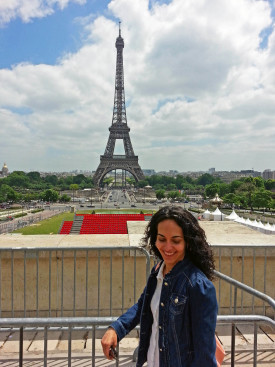 Tell us about your road to publishing. For me, it was not smooth at all. Rocky. Bumpy. Disappointing. And then, finally, the novels sold, before I started throwing things.
Tell us about your road to publishing. For me, it was not smooth at all. Rocky. Bumpy. Disappointing. And then, finally, the novels sold, before I started throwing things.
I worked as a journalist and wrote for many years in my spare time. I was rejected by some agents and then landed one. Unfortunately, he couldn’t sell Paris, Rue des Martyrs to a major publishing house and wasn’t interested in trying smaller houses. My agent started an ebook imprint so published my novel that way last year. But I wanted a different strategy. I wanted my book out in paperback, and I wanted some marketing support.
And now you own your own publishing business, Velvet Morning Press. Tell us about this change in events, though. What do you like about it, what’s a challenge?
I met self-published author Vicki Lesage, who was doing better on her own than I was with my agent. We realized that we could help each other—and probably a lot of other young writers too. So we formed Velvet Morning Press. I like the fact that we have control over the time frame for our projects.
Once a manuscript is polished, we can publish the book in four months. The biggest challenge is visibility. Since we’re small, we have to work really hard to get our name out there and show that we can produce quality books. We are grateful for the help of authors who are well-known and who have followed us on social media and promote our work.
What’s the difference between publishing with a major publishing house, self publishing, and what you offer at Velvet Morning Press?
 Like major publishing houses, we edit, do cover design and formatting, and publish our clients’ books in paperback and ebook form. And like the majors, we are selective and don’t charge authors fees. Like them, we use a royalty model. Other than our size, the main differences between the majors and us:
Like major publishing houses, we edit, do cover design and formatting, and publish our clients’ books in paperback and ebook form. And like the majors, we are selective and don’t charge authors fees. Like them, we use a royalty model. Other than our size, the main differences between the majors and us:
*We bring our books to market in about four months.
*We only accept very polished work. We will edit, but if a book really needs major rewriting, we will pass on the project.
*We don’t have a big budget like the majors, and we know that we can’t compete on that level. So we don’t. We can’t pay for advertisements in a major newspaper, but we use our creativity to market in different ways. And so far, so good.
We only work with self-published authors through our separate “author services” branch. Through that service, we offer editing, formatting etc. for a fee to authors who are not clients of our publishing house.
So far, submissions to our publishing house mainly have come from authors who are seeking to be traditionally published. I think many writers who love self-publishing continue to go down that road.
As a publisher, what are you looking for in a novel?
We look for novels that have us hooked within the first few pages. We look for engaging, interesting characters. And we look for carefully edited work. If I see that the author has made a bunch of spelling errors that are even highlighted by the computer’s spell check, to me, this seems sloppy. As a writer myself, I wouldn’t submit a manuscript like that.
 And when you’re not writing, not working on your publishing business, if there is time left over, what do you just love to do?
And when you’re not writing, not working on your publishing business, if there is time left over, what do you just love to do?
Reading, modern dance, strolling around Paris with my husband, having a “girl’s afternoon out” with my 4-year-old daughter.
Five things we must do if we visit Paris that are not your typical tourist attractions…
*The Rue des Martyrs in Montmartre (the setting of Paris, Rue des Martyrs) is now more and more on the radar screens of tourists, but it is still is a great example of a traditional Parisian neighborhood. Stop at a café and watch the world go by.
*The Promenade Plantee, in the 12th arrondissement is an elevated walkway along an old railway. Today, it’s lined with flowers, plants and trees above the hustle and bustle below. A great place for a walk!
*For fans of Hemingway, take a stroll by his old apartment at 74, Rue du Cardinal-Lemoine. And walk around the neighborhood, imaging how Hemingway must have saw it. (Things looked about the same back then as Paris doesn’t change much!)
*Take a side street, explore a neighborhood. This is where you’ll also have a chance of finding the best food—at a modest, neighborhood café that is filled with locals.
*Walk along any of the bridges at sunset and watch how the light illuminates the beautiful historic buildings, turning them golden!
Let’s let everyone take a peek as your newest book, Close to Destiny.
July 1
It was my third time. Don’t they always say things happen in
threes? Knife slitting through fragile skin, still damp.
Water pounding like giant teardrops. Sitting at the edge of the
bathtub, knees shaking, watching scarlet water flow.
Darkness. Silence.
What seemed like a second turned into eternity. Blinding light.
Voices. Madness. Silence.
That’s all I could write, all I could remember.
I didn’t want to think about it. I didn’t want to analyze the situation or understand
Another snippet…
There have been too many coincidences, too many dreams, too many feelings
leading me down the same road. I still don’t understand how Destiny knew all
that she did—about me, then and now.
About you. About everyone, it seems.
OK, she was a medium, but what does that really mean? That she had access to
the deepest secrets of everyone on the planet? Maybe it doesn’t matter, anyway. If
I’m willing to accept such an outlandish story, I guess I should be willing to
accept the mysterious nature of Destiny.
That said, I can’t continue this way.
Thanks for chatting with us, Adria!
Close to Destiny on Amazon: http://www.amazon.com/Close-Destiny-Adria-J-Cimino/dp/0692346945
Paris, Rue des Martyrs on Amazon: http://www.amazon.com/Paris-Rue-Martyrs-Adria-Cimino/dp/0692335072
That’s Paris: An Anthology of Life, Love and Sarcasm in the City of Light on Amazon: http://www.amazon.com/Thats-Paris-Anthology-Sarcasm-Light/dp/0692340114
Adria’s blog: http://adriainparis.blogspot.fr/
Adria’s Facebook page: https://www.facebook.com/AdriaJ.inParis
Adria’s Twitter handle: @Adria_in_Paris
Sign-up for Adria’s New Release Newsletter: http://eepurl.com/8y0K1
March 17, 2015
Author To Author Interview: Catherine Ryan Hyde
Tough childhood, ex pastry chef, nature lover, owns a horse.
Today I’m chatting with Catherine Ryan Hyde, the author of 27 best selling novels, including the book I’m reading now, When I Found You, which I love, Pay It Forward (Have you seen the movie? It made me cry.) and Becoming Chloe.
Catherine, we want to peer into your life and your writing. Would you please tell everyone about yourself?
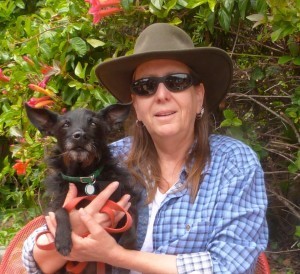 I live in this tiny town, Cambria, California. It’s on the Central Coast, right on the ocean, pretty much equidistant from L.A. and San Francisco, but very far from both. Which is fine with me.
I live in this tiny town, Cambria, California. It’s on the Central Coast, right on the ocean, pretty much equidistant from L.A. and San Francisco, but very far from both. Which is fine with me.
I have a dog and a cat who are more or less the same size and get along beautifully, despite the fact that the dog was an only pet for seven years. I also have a new horse. I’ve only had him for a few weeks. He’s not my first horse, but he’s my first after decades away from riding. But he has a lovely temperament and we’re doing fine.
A typical day may or may not include writing. It’s very feast or famine. It may include writing, kayaking, horseback riding, hiking, interviews or other content like this, social networking, communication with readers, or some lovely combination of the above.
What were you like as a child? How was your childhood?
I think I was a dreamer, and very much a loner. I wasn’t popular at all, so I don’t think I was a loner by choice. (These days I could do either, but I’m still a loner.) I didn’t have a happy childhood. My family was dysfunctional and chaotic, and I always felt a little lost in it. I became the child who blended in with the wallpaper. I guess I figured everybody was busy enough and had problems enough without me adding to their burden. I wrote when I was young, and I knew I wanted to be a writer when I was fourteen. But it took many years—a couple of decades, actually—before I was brave enough to pursue that dream for real.
I am sorry about your childhood. It seems that many writers have struggled with difficult childhoods. Perhaps that’s what put them on the road to writing.
I feel compelled to write. I don’t know what I would do if I wasn’t a writer. Do you feel the same? Is writing a calling? If you weren’t a writer, what would you be? What did you do before you became a full time writer?
I really don’t want to be anything but a writer. It’s definitely a calling. I feel we all have something we’re supposed to contribute to the world while we’re here, and I know writing is my something.
At one point I figured if my ability to make a living as a writer fell out from under me, which is always a possibility, I would teach writing.
Now I’m close enough to retirement and have managed to squirrel enough away that I figure I’ll just always write, even if I’m not making much money at it. The only other thing I could potentially imagine for myself is being one of those park rangers who spend whole seasons up in fire lookout towers, alone with nature.
But of course that might be something that works better in my head than it would in the real world.
Before I wrote full time I was a dog trainer, a pastry chef, a shade-tree mechanic, a Hearst Castle tour guide and some other comically varied jobs.
You have many skills! Please send me your favorite pastry…
Do you have one or two favorite books, out of your 27 total? Which ones and why?
At first I didn’t. Then I wrote Becoming Chloe, and it was my favorite for many years. Now I have newer books—like When I Found You, Don’t Let Me Go, and Take Me With You, to name just a few—that I think are probably better books. At least, I certainly hope my writing is getting better as I go along. But I still have a heart connection with Becoming Chloe that can’t be left out when answering this question.
The why is harder. How can you really quantify a heart connection? But it seems to have to do with Jordy, the main character—the way he protects Chloe even when he needs so much protection, and the way he tries to prove to her that the world is a beautiful place, when he’s not at all convinced he believes it himself.
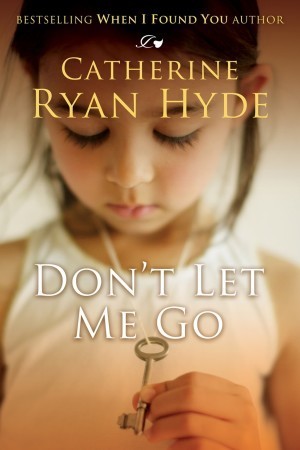 What is the legacy that you want your books to leave?
What is the legacy that you want your books to leave?
I think what I’m going for (and I really only see this in retrospect—I don’t set out with this kind of theme consciously in mind) is a more open and loving look at what it means to be human.
I feel that a book can be a look into the mind and heart of someone you might not want to know in real life. But, knowing them on the page, there’s that recognition of a common humanity.
I like to be vulnerable and open in my own life when it comes to letting people see that I’m a highly fallible human being. I think when we do that for each other, we all feel a little more human, and it becomes a more positive thing to be.
That would be a great legacy for me: to help my readers feel more human, but in a good way.
I am all for feeling more human.
Speaking of being human, I noticed that you love to hike, take photos, travel, and kayak. Obviously, you love the outdoors. When did this love of the outdoors come about? Do you feel that your love of the outdoors and your love of writing are intertwined?
I can’t honestly say when it came about, but I have an eye for natural beauty. I’m not so crazy about man-made things. Cities will always be ugly and stressful to me.
Nature is more like church. I find a connection there. I get calm, and I feel as though I’m part of everything and vice versa. And once you find that feeling, you will seek it out as often as possible.
At first I think my love of writing was less intertwined. It was more that I went out into nature and recharged, and then came back inside and used that juice in my writing. But the two are becoming more and more intertwined with books like Take Me With You, which is set in great part in the national park system, and The Long Steep Path, which is a collection of nonfiction essays really about life in general, but often about hiking.
Also the one I’m working on now, but I’m not even halfway through the draft, so it’s too soon to talk about it. But the two elements are finding ways to converge, there’s no doubt about that.
I love walking. Nature helps center me, re – charges creativity, and calms me down, so I understand exactly what you’re saying.
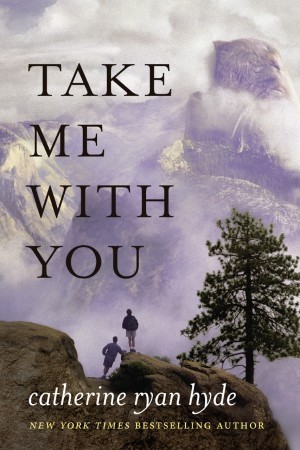 Your five pieces of advice for writers, published and yet – to – be published, would be…
Your five pieces of advice for writers, published and yet – to – be published, would be…
1. Don’t write in a vacuum. Allow reader feedback right from the start. It stings, but it’s unavoidable. Better to thicken your skin early on.
2. Don’t subscribe too tightly to anyone else’s process. Most writers will tell you that it’s a must to write every day. Probably good advice, but I don’t write every day, and I make it work. If you’re getting words down, you’re doing it right.
3. Make up your mind you won’t let rejection stop you. You will get rejected. It doesn’t mean your work is bad, it just means it’s not what that editor is looking for on that day. It’s impossible not to feel bad, so go ahead and feel bad. Just don’t let it stop you.
4. Never, ever argue with a reviewer. Never make anyone feel that their opinion is wrong, or that they have no right not to like your work. Even if they are overly snide or hurtful. How can you stop others from being snide or hurtful? You can’t. You will only end up looking like a sore loser. Walk away. Complain to your best friend. Offline.
5. People are more likely to buy a book by an author they like, so be careful what you put out online. Be human, be honest, be interesting. Don’t act like you’re any better or worse than those with whom you’re connecting.
And don’t say, “Buy my book, buy my book, buy my book.” Just be yourself, and occasionally share book news, such as an award or good review. If the readers like you, and get to know you, they’ll probably buy your book.
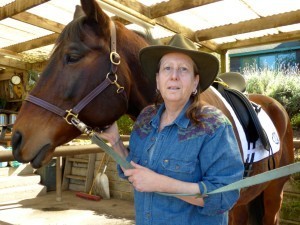 I see that you have been traditionally published and now publish with Lake Union, the publishing branch of Amazon. Can you talk a little bit about your publishing history and why you chose to go with Amazon?
I see that you have been traditionally published and now publish with Lake Union, the publishing branch of Amazon. Can you talk a little bit about your publishing history and why you chose to go with Amazon?
I also have indie editions and indie books. So I’m pretty much the consummate hybrid.
I chose to go with Amazon because the traditional adult US publishers were no longer an option. They were not taking a chance on me anymore. So indie seemed like my only option.
Then one of my indies took off, and Amazon Publishing came to me, and they were the best thing that could have happened to my career. I feel very lucky to have them. Before they came along I was struggling to make the mortgage payment. Now there isn’t one.
What are three things you are most proud of, and yes, you can include your Pay It Forward Foundation!
My biography as a whole. I love that I’ve climbed Mt Katahdin and hiked the Inca Trail to Machu Picchu and then shared a dais will Bill Clinton as a public speaker. And that I’m adding being a horse owner back in, right around the time I turn sixty. I read it and I’m reminded that I’ve led an interesting life so far. I think you can’t ask for much more than that.
The fact that I have a great relationship with so many of my readers. They email me and I answer, and we correspond. They join me on Facebook and we get to know each other, and support each other day to day. It’s a wonderful community.
And yes, my Pay It Forward Foundation, and the way that phrase and idea has spread.
What will you be doing in ten years?
This. If I’m lucky, this.
Thank you so much for your time and honesty, Catherine. I’m looking forward to reading another one of your books.
Visit with Catherine here….
My website: http://www.catherineryanhyde.com/
My blog: http://www.catherineryanhyde.com/blog/
My photo site: http://catherineryanhyde.photo/
Twitter: https://twitter.com/cryanhyde
Facebook profile: https://www.facebook.com/crhyde
Facebook author page: https://www.facebook.com/pages/Catherine-Ryan-Hyde/55974126195
February 25, 2015
Gather Your Hellfire Crowns
I love these “Gather Your Hellfire” crowns made by Sandra Drake, Linda French, and Carol McClure of Portland, Oregon.
The term “Gather Your Hellfire” comes from my book The First Day Of The Rest of My Life. I love the crafts and projects that women – together – make. What a wonderful bonding experience. Girlfriends are the best. What would we do without them?
Here’s the passage from The First Day Of The Rest Of My Life…
My momma made the best of her time in jail.
This is not to say that she liked it but, as she told us, “I gathered my hellfire, don’t forget that line, Madeline and Annie, sometimes you gotta gather your hellfire, and I made the most of a difficult situation. Did you know they don’t allow high heels in prison?” She winked at us. “No pink, either! I broke my own cardinal rule: Don’t be frumpy! Let yourself shine!”
 The warden of the women’s jail had a sister who was a customer of momma’s, and she raved about momma’s Marie Elise’s Excellent Cuts and Cuticles. The warden asked Momma to cut the hair of the inmates and do their nails. You had to earn the haircuts and the manicures, though.
The warden of the women’s jail had a sister who was a customer of momma’s, and she raved about momma’s Marie Elise’s Excellent Cuts and Cuticles. The warden asked Momma to cut the hair of the inmates and do their nails. You had to earn the haircuts and the manicures, though.
You couldn’t get one automatically, like a standing appointment on Thursday at 4:00 after mopping or laundry duty. So, using that bribery, the ruckus at the jail went way, way down. It’s amazing what a cut and style can do!
“Those girls,” my momma told us one day when we were visiting, “At least most of them, have been led astray by the men in their lives. They had terrible childhoods and they were led into drugs or alcohol and made messes of their lives. I tell them, when you get out of jail, practice the I Am Me, Stay Out Of My Way program.
“I tell them, you go to college and get a degree, you get training, you stay away from those gutter – minded idiots. Keep your hair and nails trimmed and styled all the time, proper and pretty. If you’re broke, buy one crisp white blouse and one pink blouse. One pair of beige pants, one pair of black pants, and never be without a black skirt and black heels. Put your chin up, your shoulders back, and walk like you’re worth it. That’s the Shake Your Confidence and Strut talk I give.”
She led hair-do and make-up classes at the jail, which she called, “Being A Lady,” classes. It was a, “How to look like a respectable lady and attract respectable people to you, not bad people, not slutty people, not criminals, but respectable people, because you ladies, are respectable!”
She told me later, when she was out of jail, “Honey, I had to do something in there, had to help those other ladies, or I’d lose my mind, I missed you and Annie so much, my stomach almost ate me alive. Now let me give you an up-do with those curls of yours, and we’ll play dress up with Annie, go and get your sister.”
February 3, 2015
Cooking, Cancer, and Chicken Cacciatore
The other day I burned pumpkin bread.
My mother never burned anything she baked.
My pumpkin bread was made from a mix. I virtuously added the eggs.
 My mother made her bread by hand, rhythmically kneading it, letting it rise, kneading again.
My mother made her bread by hand, rhythmically kneading it, letting it rise, kneading again.
My kitchen smelled like smoke, black clouds swirling around and about.
My mother’s kitchen smelled like the best bread in the world, like nothing I have ever tasted or will taste again.
My mother was a full time English teacher and had four kids. She cooked our dinners, from scratch, every night. Cauliflower marinara. Chicken cacciatore. Enchilada pie. Vegetarian Lasagna.
She made breakfast every morning. Oatmeal. Scrambled eggs. Toast. Homemade plum jam. No jam has ever matched my mother’s plum jam.
I’m an author and spend a lot of time writing and editing, daydreaming, drinking coffee, and taking care of kids. Our dinners are often from a bag, and I heat them up on the stove, or they come in a silver tin and it cooks on high at 350 degrees.
 I do not make breakfast. As a writer, even when my kids were young, I was up until two in the morning working, and from a very young age, my kids were scrambling on top of the counter and pulling down bowls and cereals themselves.
I do not make breakfast. As a writer, even when my kids were young, I was up until two in the morning working, and from a very young age, my kids were scrambling on top of the counter and pulling down bowls and cereals themselves.
Call me a bad mother, I’ll live with it.
My mother ate healthily, I like chocolate.
She ate fruit and yogurt for lunch every day. Hand me a burrito with guac and salsa and I’m good to go.
She had a southern belle type personality, gentle and polite, with steel beneath the softness. My personality is more like a hurricane, with a temper on the side.
The southern belle and the hurricane got along great. We believed in laughing and chatting. We believed in her delicious cooking.
When my mother was diagnosed with lung cancer, though she’d never smoked a day in her life, it had already crept into her spine, brain, and lung.
 We were at a natural foods store when the descent began. Everything she bought was organic and delicious. She picked up a small bag of groceries, fruits and vegetables, and a vertebrae in her spine snapped.
We were at a natural foods store when the descent began. Everything she bought was organic and delicious. She picked up a small bag of groceries, fruits and vegetables, and a vertebrae in her spine snapped.
That’s how we knew. That’s how it started.
The southern belle never faltered.
She did quit her beloved job teaching English to high schoolers, as the chemo and radiation would take too much time and energy, but she continued on with her life. Family. Friends. Reading. Travel. Cooking.
Marinated pasta salad. Carrot cake with extra cream cheese frosting. Pies. Thrice stuffed potatoes.
In fact, she made Christmas dinner for all of us, her insistence, two weeks before she died. The turkey was perfect.
When the smoke billowed through my house after I burned the pumpkin bread, I had to laugh as I thought of my sweet, steely mother.
She never burned anything, but I swear I could hear that southern belle laughing, right along with me.



